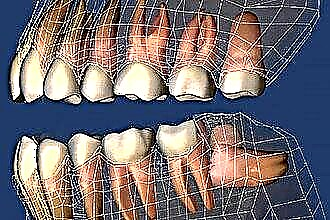Angina is an infectious disease that proceeds in an acute form, is defined as an independent disease (nosological form), and as a complication of many infectious and somatic diseases.
The form of manifestation of bacterial sore throat depends on the degree of damage to the tonsillar complex. The clinical picture of anginal lesion is a local and general reaction of the body.
 The success of treatment will depend on the timeliness of the treatment started, the correctness of the chosen drug, and adherence to the therapy regimen.
The success of treatment will depend on the timeliness of the treatment started, the correctness of the chosen drug, and adherence to the therapy regimen.
If the patient's health does not improve, but there is a deterioration in health and the development of complications, urgent medical consultation and hospitalization are required.
Causes of occurrence
Everyone gets sick at any age. There is no age or sex predisposition. Most often, the disease occurs between the ages of 3 and 50 years. This is due to undeveloped function at a young age or involution of the lymph tissue.
The predisposition is noted in people living in an urban industrial area. Visits to public places, long stays and occasional walks predispose to infection.
Causes of occurrence:
- exogenous infection (infection by airborne droplets, contact);
- autoinfection (transition of saprophytic microflora to a pathogenic state);
- exacerbation of chronic tonsillitis.
The disease has no seasonal manifestation, but is more often recorded during epidemics of viral respiratory infections. A decrease in immunity allows a bacterial infection to manifest itself in full.
Development of bacterial tonsillitis (tonsillitis)
 The main causative agent is a bacterium - β-hemolytic streptococcus of group A. It is confirmed in 35% of patients with angina or acute tonsillopharyngitis. Also, pathogens are presented: hemolytic streptococcus, hemophilic bacillus, Staphylococcus aureus.
The main causative agent is a bacterium - β-hemolytic streptococcus of group A. It is confirmed in 35% of patients with angina or acute tonsillopharyngitis. Also, pathogens are presented: hemolytic streptococcus, hemophilic bacillus, Staphylococcus aureus.
Penetrating into the tissue, the bacterium causes alterative and exudative (inflammation and edema) processes, which are expressed as a local tissue reaction and intoxication of all systems. Metatonsillar complications often develop.
The parenchyma of the lymphadenoid (pharyngeal ring), follicular complex, tonsils and lacunae is affected. Rarely, angina develops without affecting the pharynx, not only the lymphoid tissue is affected, but also the pharyngeal mucosa.
Forms and flow:
- Catarrhal - damage to the mucous tissue of the tonsils.
- Lacunar - lacunas are involved in the process, followed by the accumulation of purulent-fibrinous exudate in them.
- Follicular - manifested by inflammation of the mucous membrane, purulent lesions of the follicular tissue. Abscesses of white and yellow color are formed, which open inside the pharynx. The surface of the tonsils looks like a "starry sky".
More complex downstream are ulcerative - necrotic form, fibrinous and phlegmonous.
Signs
Bacterial sore throat in children and adults is clinically similar. The onset of the disease is accompanied by:
- sore throat;
- an increase in body temperature by 1 - 2 ° С;
- general weakness in the body, headache.
The development and course of the disease, the complexity of the form and the state of the sick organism depends on immunity and exogenous factors (the ability to adhere to bed rest, nutritional value, the level of living conditions and the effectiveness of therapy).
 Anginal inflammation in adults is manifested by the defeat of the palatine tonsils, in children - pharyngeal. Sometimes there is involvement in the anginal process, in addition to the tonsils of the palate, tubal, pharyngeal, lingual and tubal lymphoid tissue.
Anginal inflammation in adults is manifested by the defeat of the palatine tonsils, in children - pharyngeal. Sometimes there is involvement in the anginal process, in addition to the tonsils of the palate, tubal, pharyngeal, lingual and tubal lymphoid tissue.
Adults get sick more easily. Bacterial sore throat in young children has more pronounced symptoms - the child lies, refuses to eat, does not want to drink (must be forced), does not play, is apathetic.
Catarrhal sore throat - characterized by swelling, hyperemia of the tonsils. The temperature reaches 38-39 ° C, but it is successfully reduced by antipyretics. It is one of the mildest forms and has a favorable prognosis. Relief of the condition is observed for 3-4 days.
Lacunar form - in addition to edema and redness of the mucous membrane, a white plaque forms, which, together with purulent discharge, is easily removed without injury to the tissue. Only the tonsils are involved in the inflammatory process. Angina lacunae is expressed by fever, dysphagia (difficulty swallowing), intoxication, general weakness.
Follicular tonsillitis is accompanied by pyretic fever (39-40 ° C), severe intoxication of the body, chills, myalgia, severe anginal pain.
Local symptoms:
- discomfort (perspiration, dryness), sore throat (worse with "empty swallowing");
- hyperemia of the tonsils (with pharyngoscopy) and edema;
- with purulent sore throat - the formation of purulent deposits on the mucous membrane of the tonsils and plaque.
Systemic symptoms:
- General disorders - loss of appetite, chills, weakness, headache, dizziness.
- Fever - body temperature 39 - 40 ° C.
- Myalgia and joint pain are the result of intoxication.
- Regional lymphadenitis is an inflammation of the cervical, submandibular, retropharyngeal lymph nodes. Accompanied by their compaction, enlargement and soreness.
Important! The inflammatory process in nonspecific bacterial sore throat does not spread further than the tonsillar tissue (tonsils) and does not have the character of rashes.
Diagnostics
When making a diagnosis, anamnesis data (contact with a patient, epidemiological situation at the time of illness) and clinical examination (pharyngoscopy) are taken into account. The characteristic symptoms and changes in the affected tissues during a visual examination make it possible to accurately diagnose bacterial tonsillitis.
If necessary, additional laboratory tests are carried out:
- Blood tests - general analysis (exclude infectious mononucleosis and systemic blood diseases).
- Urine - a general study is carried out to determine the functional ability of the kidneys (exclude glomerulonephritis).
- Yaw smear - exclude diphtheria.
Differential diagnosis provides for the exclusion of infectious (contagious) diseases accompanied by anginal manifestations. They are: angina Simanovsky-Vincent, scarlet fever, mononucleosis, diphtheria, measles, tularemia.
Treatment
If bacterial sore throat (symptoms) is mild, then treatment in adults and children is possible at home.
They observe bed rest, a diet (with a predominance of dairy and vegetable dishes), and you should drink a lot. Treatment of patients with bacterial tonsillitis with pronounced signs of intoxication of the body is hospitalized and treated permanently.
 Complex therapy involves the use of:
Complex therapy involves the use of:
- analgesics;
- antipyretic drugs;
- antibiotics;
- immunomodulators and vitamin and mineral preparations.
Severe intoxication and fever require infusion therapy (intravenous fluids) to prevent dehydration and complications. The use of antibiotics for bacterial tonsillitis is also necessary.
It is proposed to treat the anginal process at home using antibacterial agents as prescribed by a doctor. In most cases, streptococcal sore throat therapy has an empirical approach. This is prompted by the characteristic clinical signs: anginal pain, exudative tonsillitis, cervical lymphadenitis, febrile hyperthermia.
The purpose of their application:
- Reduce the risk of occurrence and development of rheumatoid pyretic syndrome (fever).
- Prevention of inflammatory - purulent processes.
- Prevention of generalization of anginal inflammation.
- Reducing the duration of the disease and reducing the severity of symptoms.
Only a doctor should decide on the choice of antimicrobial drug and its use.
An example of the use of antimicrobial agents, depending on the course of the disease:
- Acute exudative process - Azithromycin, Cephalexin, Cefotaxime, Spiramycin, Clarithromycin.
- Recurrent form - Cefuroxime, Lincomycin, Azithromycin.
Antibiotics are used orally, but with a pronounced clinical picture, parenteral administration of funds (in the form of injections) is recommended. The optimal course of antibiotic use for angina is 10 days.
It is worth paying attention to the presence of signs characteristic of a viral infection: rhinitis, cough, throat hyperemia, sore throat and the absence of fever. With this clinical syndrome, the use of antibiotics is impractical.
You can treat uncomplicated catarrhal sore throat with folk methods in combination with symptomatic therapy.
Treatment for catarrhal sore throat:
- At high temperatures, antipyretics (antipyretic drugs) and analgesics are used - Paracetamol, Nurofen, acetylsalicylic acid (aspirin), Eferalgan and other popular drugs.
- After a slight decrease in temperature, hot foot baths are used (exposure 10-15 minutes), after which they go to bed.
- Carefully warming the front surface of the neck with compresses, at the same time rinsing the throat with saline, soda solutions and medicinal infusions (mint, sage, calendula, chamomile).
- They use local pharmaceutical antiseptics with anesthetic effect. Antimicrobial medicines are used in the event of a bacterial infection - the inflammatory process passes from catarrh to a lacunar or follicular form.
Lack of treatment, its inadequacy leads to complications:
- paratonsillitis;
- paratonsillar abscess;
- mediasthenitis;
- nephritis and cystitis;
- rheumatoid inflammation of the heart, joints.
The prognosis for streptococcal sore throat depends on:
- timeliness and correctness of the diagnosis;
- adequate treatment started on time;
- conditions and mode of life of the patient (everyday life, nutritional value);
- body resistance;
- prevention of recurrence of the disease.
If for 2-3 days there is no positive dynamics indicating recovery, you need to pay attention to the adequacy of the selected drug (antibiotic) and the correctness of the diagnosis. If necessary, it is worth using a medication of a different (wide) spectrum of action, revising the treatment regimen.
Features of the treatment of angina in children
 The disease is treated in children in the same way as in adults. In the treatment of streptococcal catarrhal sore throat, drugs intended for children are used. Their appointment should be carried out by a pediatrician after examining the child and making a diagnosis.
The disease is treated in children in the same way as in adults. In the treatment of streptococcal catarrhal sore throat, drugs intended for children are used. Their appointment should be carried out by a pediatrician after examining the child and making a diagnosis.
Important! You should not start treating a child if you suspect a streptococcal sore throat without being examined by a pediatrician.
To fight infection, use:
- antibacterial agents (determined by the doctor, not the parents);
- antipyretic and analgesics (complex modern drugs);
- local anesthetics and antiseptics (solutions, sprays).
It is recommended that the child maintains bed rest until the temperature returns to normal and drank a lot (warm teas, compotes, room temperature fruit juices, hydration solutions). They offer warm milk with the addition of honey; a warming bandage is applied in the neck area.
Important! Warming compresses should be used very carefully - they are permissible only with a catarrhal form of sore throat.
In the complex of treatment, immunomodulatory drugs are used, but not antiviral ones. The use of the latter is unreasonable and useless. To prevent the development of dysbiosis in connection with the use of antibacterial agents, it is mandatory to use lacto- and bifidobacteria on the recommendation of a specialist.
It is mandatory to observe children by an otolaryngologist to analyze the dynamics of the development of the anginal process in order to avoid the development of paratonsillitis.
Timely and adequate treatment eliminates uncomplicated bacterial sore throat in 7-10 days. An indicator of successful treatment and recovery is an improvement in the general condition, the child becomes more active, eats and plays with pleasure.
Prevention of the frequent occurrence of angina in children and adults implies strengthening the immune system. This is achieved by ensuring adequate nutrition and adherence to a healthy and active lifestyle (exercise and sports, walking more and more often in the fresh air, hardening), getting rid of bad habits (smoking and alcohol abuse).



